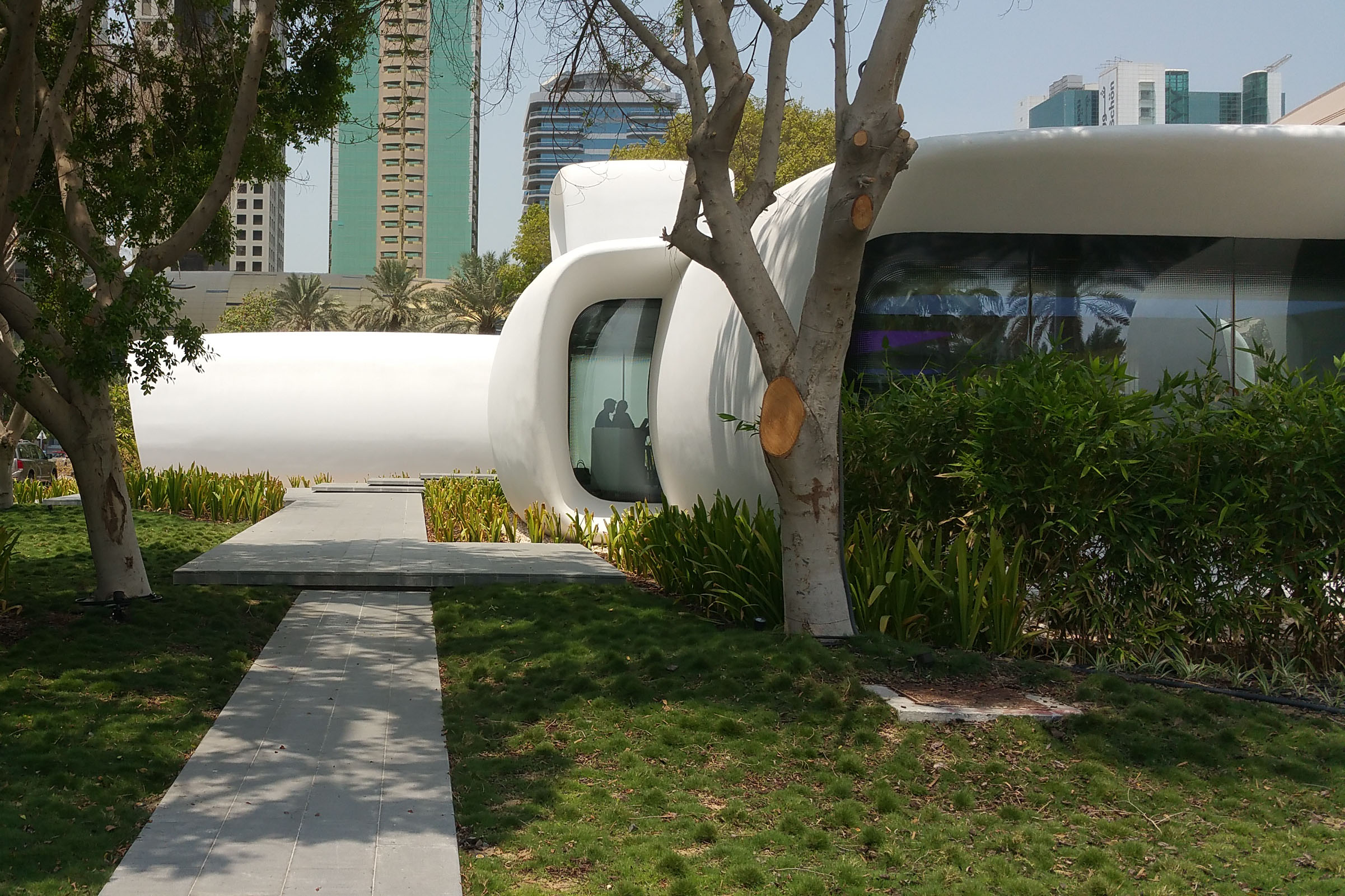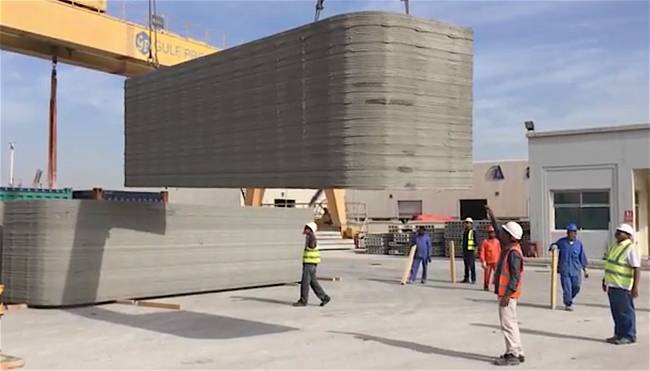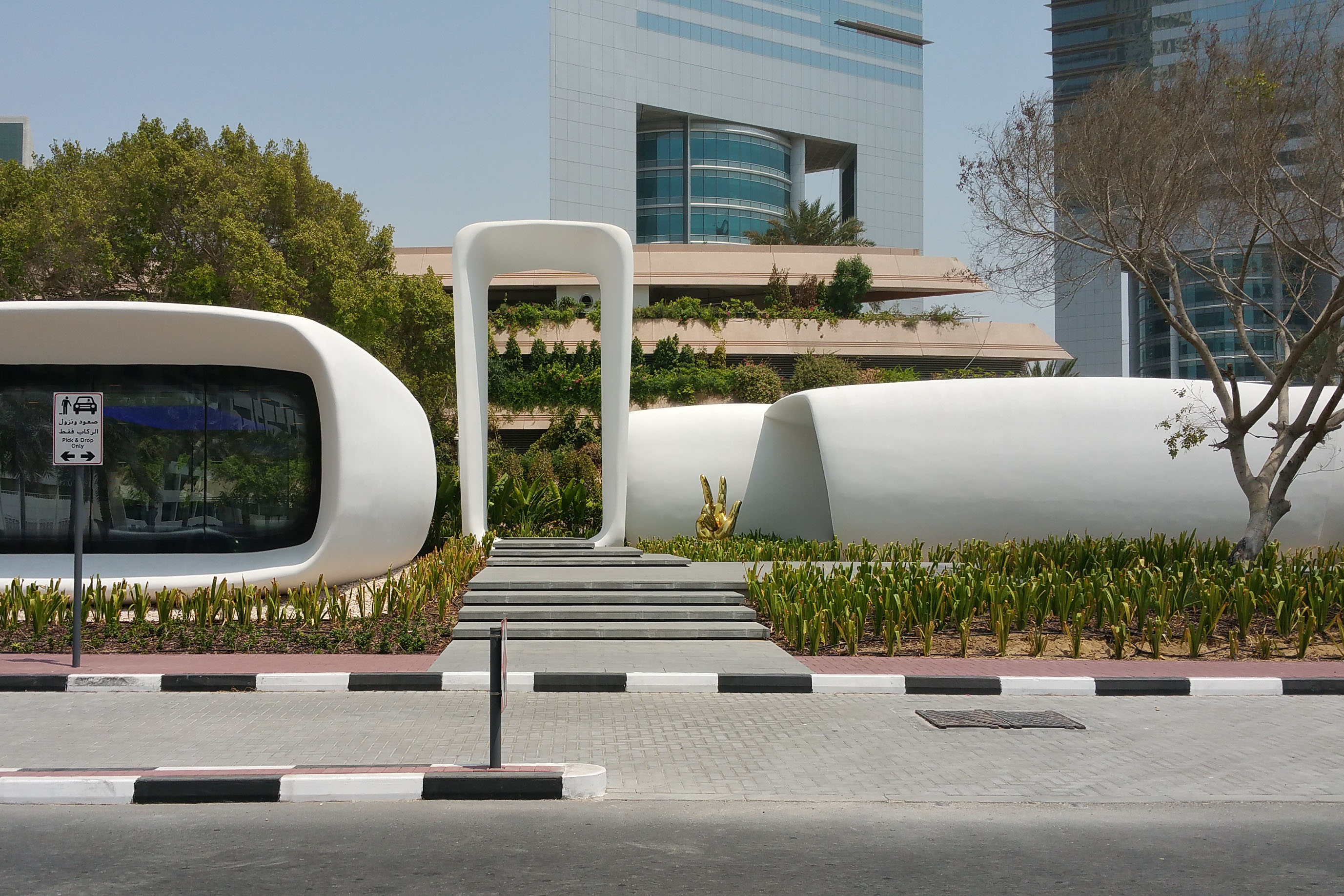I have seen during the last year various claims on “a 3d printed car”, a “3d printed house”, a “3d printed office”, a “3d printed airplane”. The UAE announced that by the year 2020 25% of all new construction will be 3d printed. What of this is really true? What of this is likely to happen?

What is 3d printing?
First of all we need a definition of what is 3d printing. For sure it an additive technique, not subtractive, meaning that one adds material to form the object. Being additive does not cover the intention of 3d printing though, since all on site concrete would be 3d printed according to that definition. So the definition will need some more specification. The process of 3d printing must be automated, robotized, controlled from a distance, executed by machines, not by people handling hand-held tools.
Slow cooking
But even then, a fully automated concrete pouring machine would not be very relevant since it would automate a traditional process which is not very smart. Even when the pouring process would not need any molds, as could be the case with a rather slow procedure using quickly hardening concrete, that process would be nothing more then an mechanization of an known procedure. Such slow cooking 3d printing process could be compared with an automated horse, which would be just an automation rather than inventing something new like a wheeled car. Well, we still count car’s propulsion forces in horsepower, proving how strongly past customs survive in today’s vocabulary.

Less than 10% is actually 3d printed
Is it right to call something a 3d printed home when only 10% of the whole is 3d printed? We need to be honest about the amount of 3d printed parts of a 3d printed car, a 3d printed home etc. The best I have seen so far is a 3d printed framework, representing less than 10% of the total enterprise of assembling a car, of putting together a house. The examples I have seen rely heavily on exterior and interior finishing for the walls, the floors and the ceilings, and on additional handcrafted efforts to establish a precise bond to windows, doors, let alone the wiring and plumbing of the house. I know the ultimate goal is to print complex hybrids using different materials for their different functionalities. But the inconvenient truth is that we are far from that point.
Promotional vehicle
Recently I have seen the 3d printed office in Dubai, a promotional vehicle as to promote the Museum of the Future, an excellent design by Shaun Killa architects from Dubai, scheduled to be completed before 2020. Also the the 3d printed part of the office is no more than the raw and rough core structure, counting for even less than 10% of the completed building. The shape it suggests from the outside is not what is actually 3d printed. A elaborate structure has been added to the 3d printed core as to hold an doubly curved stucco facade. The strangest thing is that introducing 3d printing techniques has caused an excessive amount of traditional labor as to end up with a proper finishing. Yet as a promotional vehicle it works very well as the take off for the ambitious governmental promotional campaign to build 25% of all construction with 3d printing technology by the year 2030.

Can it be scaled up?
Yet the biggest inconvenience I feel towards 3d printing is its inability to be scaled up to the grand scale of larger buildings and larger machines. Now it is feasible to 3d print in a meaningful way smaller things like scale models, rings, parts. Scaling up tenfold in all three spatial dimensions means multiplying 1000 times for the object. Thousand times in production time and another thousand times of material costs. In other words we are factor one million away from economically 3d printing parts that are ten times bigger than the examples around. No way that optimization of the 3d printing process and topologically optimizing the deposit of materials can compete with that reality in the near future. Not for the bulk of work that lies ahead of us.
3d printing is for the long tail of economy
So when 3d printing concrete for larger structures that need to be built fast is a not such a smart idea, what could be a smarter approach using 3d printing technology? Will 3d printing be scaled up to cars, homes, office, towers and larger structures at all? My view is that it will happen in the consumer market, but not to replace the larger structures and not executed by the larger companies. I believe it may flourish among individual customers representing the long tail of the economy. Roughly half of the global economy will be managed by ever growing multinationals, while the other half of the economy is privately managed as to express individual lives. A form of basic income could pump up the length and mass of the long tail.
The challenge is to 3d print complex hybrid components
But that is not the whole story, 3d printing has all my attention since it allows to design and produce series of unique components. The great thing about 3d printing is that we no longer need to build molds, or that the molds become the load bearing building blocks themselves. It allows for the assembly of series of small and medium sized components to complex and hybrid larger structures, and deposit materials where and as needed. My own research heads into this direction, into the direction of the design and production of made to measure transportable chunks of a complex 3d puzzle, hybrid components integrating every aspect of material composition, structure, skin, distributed building physics, practical finishing and attractive ornamentation. And its needs to be able to be 100% recycled and display overall good performance in design, production and in use.
Surface quality
Mind you, none of the examples around today come close to having a nice surface finish, nothing like a serious structural capacity on the larger scale. I have seen no integration of climatic control unless used as a second perforated skin. And certainly not the much needed exactness to fit to other components, as to fit seamlessly to the 3d printed parts.
Trapped in the delusion
So let’s be serious about robotic 3d printing and robotic assembly of complex parts, let’s put the bar high as to trigger much needed practical inventions. Let’s design to produce a serious structure which features all aspects of a modern comfortable building. Otherwise we will be trapped in the inconvenient truth of the 3d printing delusion.
Kas Oosterhuis, 15 September 2016
